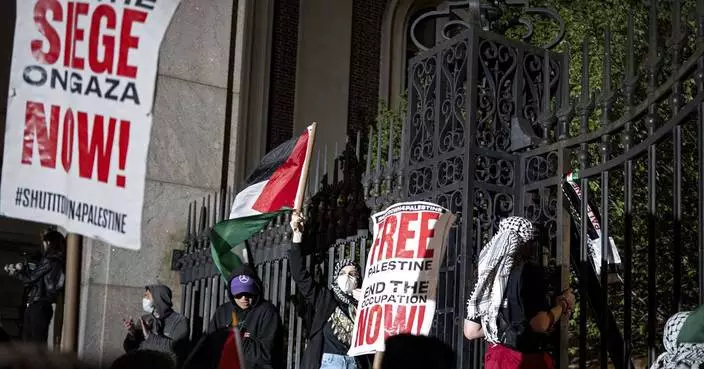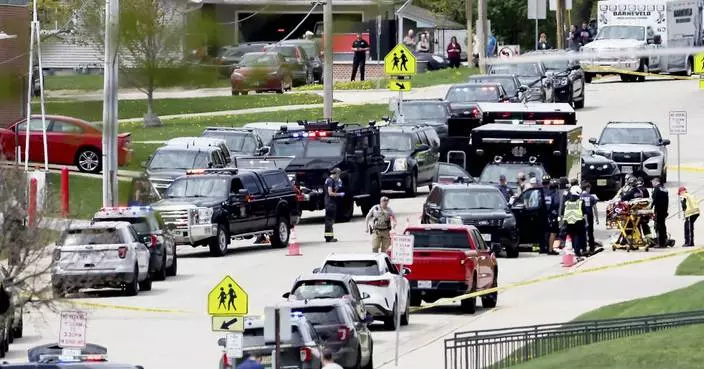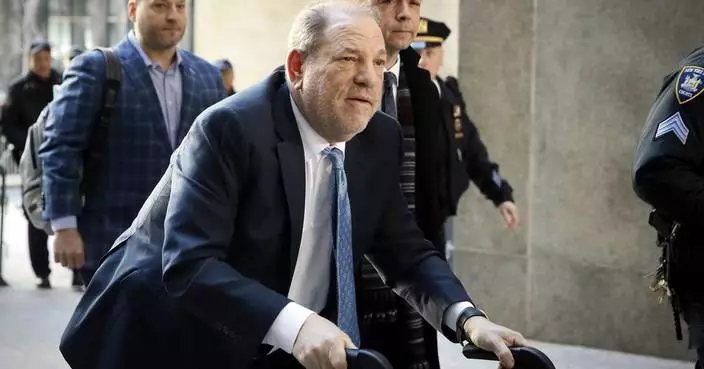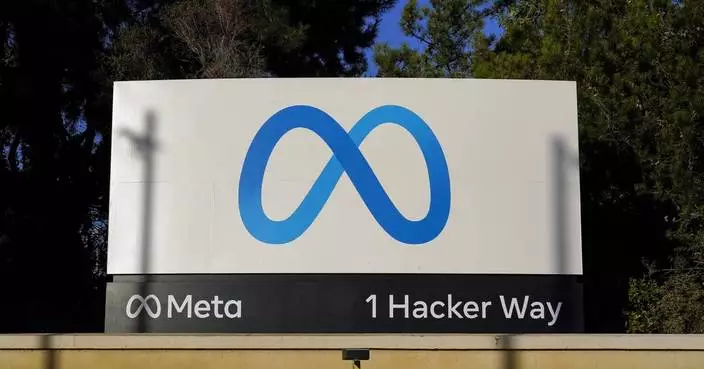BANJA LUKA, Bosnia-Herzegovina (AP) — Thousands of Bosnian Serbs rallied on Thursday denying that genocide was committed in Srebrenica in 1995 despite rulings to the contrary by two United Nations courts.
More than 8,000 Bosniak Muslim men and boys were executed by Bosnian Serb troops in the eastern Bosnian enclave in July 1995. The victims' remains were dumped in mass graves and later reburied to hide evidence of atrocities.
International courts in The Hague, Netherlands, have branded the crime in Srebrenica a genocide, Europe's first since World War II. Bosnian Serb top army officers and political leaders also have been convicted of genocide by U.N. judges.
Srebrenica was a “mistake” and a “huge crime,” Bosnian Serb separatist leader Milorad Dodik told the crowd at the rally in the northwestern town of Banja Luka that is the Bosnian Serb main administrative center. “But it wasn't genocide.”
The rally was organized in protest of a draft U.N. resolution commemorating the genocide in Srebrenica that is supported by the Bosniak politicians in Bosnia along with a number of European countries and the United States.
The resolution is yet to be passed in the U.N. but the Bosnian Serbs and neighboring Serbia have been strongly opposed, saying it would brand the Serbs as a “genocidal nation.” The Serbs are supported by Russia and China.
Genocide denial is punishable by Bosnia's own laws. Bosnian Serb parliament, however, earlier on Thursday approved a report denying the Srebrenica genocide.
Dodik reiterated his threats that Bosnian Serbs, who control about a half of Bosnia, would split from the rest of the country if the Srebrenica resolution is passed in the U.N General Assembly.
The other half of Bosnia is run by the country's Bosniaks, who are mostly Muslim, and Croats.
“We do not want to live in the same state with you (Bosniaks) and we will not live in the same state with you,” said Dodik. “We will do it (split) when the conditions are right.”
Serbia's parliament speaker and outgoing Prime minister Ana Brnabic also attended the gathering in Banja Luka.
Dodik is staunchly pro-Russian and has faced U.S. and British sanctions for his separatism. He has traveled to Russia and met with Russia's President Vladimir Putin despite the invasion of Ukraine and in defiance of the West.
In his speech, Dodik said he hoped a potential victory at the upcoming U.S. election by former President Donald Trump would create “different conditions in which we will play.” He did not elaborate. Dodik ended his speech by exclaiming “Long live Russia!”
Bosnia remains ethnically divided and politically tense long after the end of the 1992-95 war. The troubled Balkan nation is seeking European Union membership but internal divisions have hampered the effort amid fears of instability as the war rages in Ukraine.
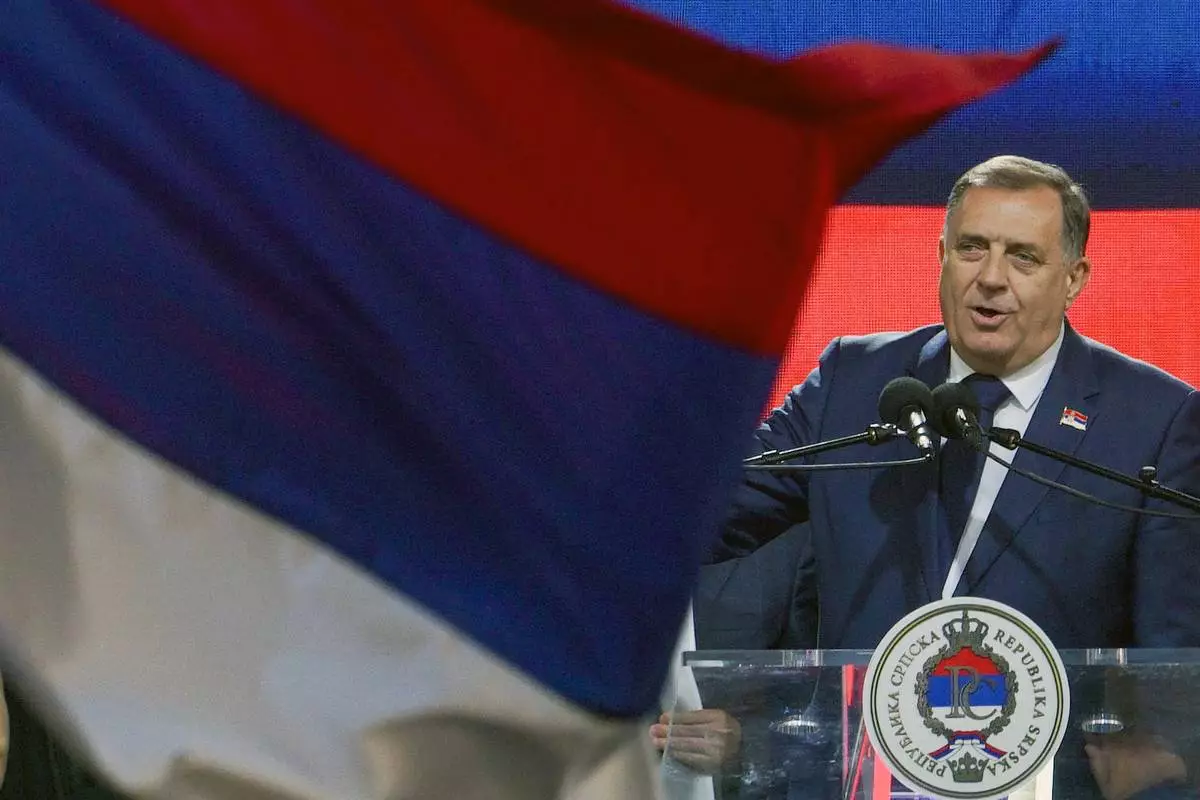
Bosnian Serb political leader Milorad Dodik speaks during protest in the Bosnian town of Banja Luka, 240 kms northwest of Sarajevo, Thursday, Apr.18, 2024. Thousands of Bosnian Serbs rallied on Thursday denying that genocide was committed in Srebrenica in 1995 despite rulings to the contrary by two United Nations courts. More than 8,000 Bosniak Muslim men and boys were executed by Bosnian Serb troops in the eastern Bosnian enclave in July 1995. The victims' remains were dumped in mass graves and later reburied to hide evidence of atrocities. (AP Photo/Radivoje Pavicic)

Supporters of Bosnian Serb political leader Milorad Dodik wave Serbian flags during protest against what he claims is Western aggression against Republika Srpska entity in the Bosnian town of Banja Luka, 240 kms northwest of Sarajevo, Thursday, April 18, 2024. (AP Photo/Radivoje Pavicic)
WASHINGTON (AP) — The Federal Reserve on Wednesday emphasized that inflation has remained stubbornly high in recent months and said it doesn’t plan to cut interest rates until it has “greater confidence” that price increases are slowing sustainably to its 2% target.
The Fed issued its decision in a statement after its latest meeting, at which it kept its key rate at a two-decade high of roughly 5.3%. Several hotter-than-expected reports on prices and economic growth have recently undercut the Fed’s belief that inflation was steadily easing. The combination of high interest rates and persistent inflation has also emerged as a potential threat to President Joe Biden’s re-election bid.
“In recent months," Chair Jerome Powell said at a news conference, “inflation has shown a lack of further progress toward our 2% objective."
“It is likely that gaining greater confidence,” he added, "will take longer than previously expected.”
The Fed chair stressed, as he has before, that the central bank's decision on when to cut rates will depend on the latest economic data. But he struck a note of optimism, saying, “My expectation is that over the course of this year, we will see inflation move back down.”
Wall Street traders cheered the prospect that the Fed will cut rates at some point this year, even if not as soon as they had hoped. Share prices surged and yields fell during Powell's news conference, with stock indexes all rising more than 1%.
Still, the central bank’s latest message reflects a shift in its timetable on interest rates. As recently as their last meeting on March 20, the Fed’s policymakers had projected three rate reductions in 2024, likely starting in June. Rate cuts by the Fed would lead, over time, to lower borrowing costs for consumers and businesses, including for mortgages, auto loans and credit cards. But given the persistence of elevated inflation, financial markets now expect just one rate cut this year, in November, according to futures prices tracked by CME FedWatch.
The Fed’s warier outlook stems from three months of data that pointed to chronic inflation pressures and robust consumer spending. Inflation has cooled from a peak of 7.1%, according to the Fed’s preferred measure, to 2.7%, as supply chains have eased and the cost of some goods has actually declined.
Average prices, though, remain well above their pre-pandemic levels, and the costs of services ranging from apartment rents and health care to restaurant meals and auto insurance continue to surge. With the presidential election six months away, many Americans have expressed discontent with the economy, notably over the pace of price increases.
On Wednesday, the Fed announced that it would slow the pace at which it’s unwinding one of its biggest COVID-era policies: Its purchase of several trillion dollars in Treasury securities and mortgage-backed bonds, an effort to stabilize financial markets and keep longer-term rates low.
The Fed is now allowing $95 billion of those securities to mature each month, without replacing them. Its holdings have fallen to about $7.4 trillion, down from $8.9 trillion in June 2022, when it began reducing them. On Wednesday, the Fed said it would, in June, reduce its holdings at a slower pace, and allow a total of $60 billion of bonds to run off each month.
By cutting back its holdings, the Fed could contribute to keeping longer-term rates, including mortgage rates, higher than they would be otherwise. That’s because as it reduces its bond holdings, other buyers will have to buy the securities instead, and rates might have to rise to attract the needed buyers.
The U.S. economy is healthier and hiring stronger than most economists thought it would be at this point. The unemployment rate has remained below 4% for more than two years, the longest such streak since the 1960s. And while economic growth reached just a 1.6% annual pace in the first three months of this year, consumer spending grew at a robust pace, a sign that the economy will keep expanding.
That economic strength has led some Fed officials to speculate that the current level of interest rates might not be high enough to have the cooling effect on the economy and inflation that they need — and that the policymakers might even need to switch back to rate increases.
But at Wednesday's news conference, Powell sought to dispel such speculation, saying, "I think it’s unlikely that the next policy rate move will be a hike.”
He also downplayed any concerns that the economy might be at risk of sliding into “stagflation” — a toxic combination of weak growth, high unemployment and elevated inflation that afflicted the United States during the 1970s.
“I was around for stagflation," Powell said, "and it was 10% unemployment, it was high-single-digit inflation. And very slow growth. Right now, we have 3% growth which is pretty solid growth, I would say, by any measure. And we have inflation running under 3%. ...I don’t see the ‘stag’ or the ‘flation,’ actually.”

FILE - Federal Reserve Board chair Jerome Powell speaks during a news conference at the Federal Reserve in Washington, March 20, 2024. The Federal Reserve wraps up its two-day policy meeting Wednesday, May 1, 2024. Most analysts expect that the central bank will leave its benchmark borrowing rate alone for the sixth straight meeting. (AP Photo/Susan Walsh, File)






